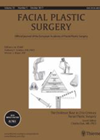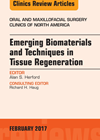
Journal Reviews
Cervical tracheal reconstruction
This Chinese animal study looked at the use of a xenogenic acellular dermal matrix for tracheal reconstruction. The authors took a total of 22 rabbits and divided them into an experimental (repair with xenogenic acellular dermal matrix) and control group...
Microvascular free flap failures – looking beyond surgical technique
Microvascular free flaps are commonly used in reconstruction for head and neck defects. Failures of these flaps, however, are associated with a significant morbidity and mortality. Flap failures within the first 72 hours are commonly attributed to technical failure of...
Delirium post-op
This is a retrospective study from Japan analysing 102 patients who underwent oral cancer resection and free flap reconstruction. Postoperative delirium occurred in a third of these patients. An increased risk was identified in those with high preoperative albumin, postoperative...
Total lower lip reconstruction: a review
Total or near total defects of the lower lip may result from trauma, cancer ablation or congenital causes. Defects usually involve the full thickness and include skin, muscle and mucosa. There are a number of techniques for the one stage...
One anastomosis or two
This is a cumulative meta-analysis from Hong Kong reviewing 27 articles and a total of 7,389 flaps. The authors, at the outset, acknowledge that the number of anastomoses is not the only factor of venous compromise and flap failure. Nonetheless...
Beware the skinny patient…
The adverse health impacts of an excessive BMI are well known. This study highlights one laryngeal pathology for which a low BMI appears to be a significant risk factor. The records of 28 patients treated for arytenoid cartilage dislocation were...
The double-half bilobed flap or traditional bilobed flap: which is better?
Reconstruction of the nasal tip following ablative surgery can be taxing. The nasal tip is a very visible area with largely immovable skin and reconstruction needs an appreciation of the various subunits to achieve best results. The traditional superiorly based...
An overview of cranioplasty
This article provides a summary of the indications, materials and current techniques available in cranioplasty. Cranioplasty is performed to restore the normal architecture of the skull following craniectomy for many reasons including intracranial infection, trauma and neoplasm. The timing of...
Tissue engineered flaps
This article provides a thorough summary of the current techniques available in head and neck reconstruction. It details the challenge of restoration of form and function posed by the shape of the craniofacial skeleton and soft tissue. The introduction on...
Sellar surgery – when to prepare for repair
Endoscopic sellar surgery, especially for adenomas, is a relatively safe, straightforward surgery with (mostly) reproducible results and few complications. One of the commonest complications is the creation of a CSF leak with the subsequent need for repair (there is usually...
Improving the temporal contour in reconstruction
A feature of the temporalis flap is the sunken contour left behind. This group from Japan present a variation for filling defects for which we would traditionally use a temporalis muscle containing. The laterally based peri-cranial flap they present uses...
Money saving using CAD-CAM in mandibular reconstruction
CAD-CAM (computer aided design and computer aided manufacturing) is an exciting field in the functional and accurate reconstruction of oral cavity defects. This is a prospective study from Italy based on data from 20 consecutive mandibular reconstructions from 2011 to...

















